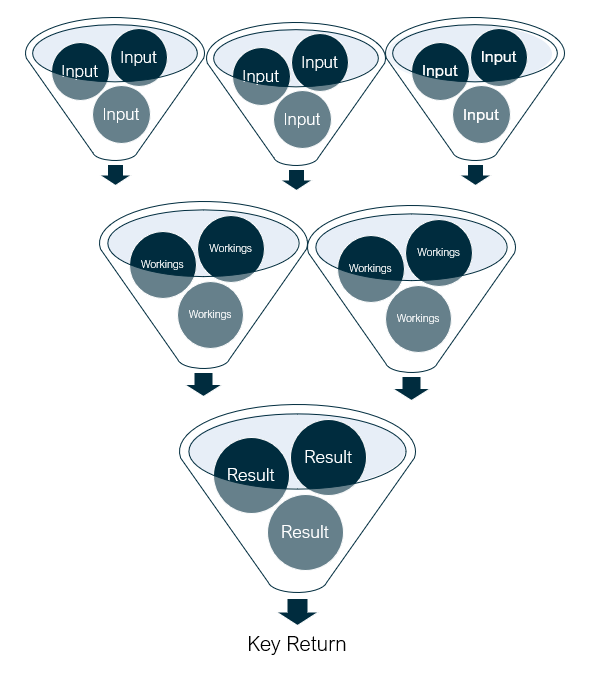There’s a common perception that a financial model is a black box – numbers go in and numbers come out, but what happens in between is a complete unknown and only to be understood by an elite few who dabble in the dark arts. It is certainly true to say that some financial models do meet that description, but a good financial model should not.
A good financial model should be easy to follow and transparent in its structure. A lot has been written about the importance of clear formulas, but where there is far less focus on models is in the structure of the model itself.
I like to think about this in terms of a marble run. For the lucky people out there who haven’t experienced the joy of a marble run, the basic idea is to drop a glass marble in at the top and watch it descend through all the various traps and tricks you have built before finally coming to rest under the fridge or equivalently inaccessible place. So what does this have to do with models? I think of the marble as an input, its journey as the workings of the model and its final resting place as the result.
A good marble run is largely the opposite of a good model. It is complex, does a few wholly unnecessary loop the loops and produces random results, but there are some similarities. If you put the marble in at the top and it doesn’t go anywhere or gets stuck, it’s not much fun. In the same way, we see plenty of models with excess marbles (sorry, inputs) that are redundant or don’t contribute to the derivation of the results. This is no fun either and, at its worst, can lead to a significant error.

A good model represents the most simple and boring marble run. The marble should go in at the top and clearly work its way through the system. The system should be designed so that it is easy to add more inputs and more sections, but that so that there is no doubt the overall flow will be unchanged. In the diagram above, another input ball can be added and its journey is clear. It will not skip a section, come out the side or move over to another section. This is the transparent art of financial modelling.
At Elgar Middleton we can build some great marble runs, but we also know how to build good models.
